Building Team Bonds
From scavenger hunts to offsite retreats, team-building activities help companies forge stronger bonds and tap their employees' full potential.
It's easy to understand why someone would rather spend February in Palermo, the capital of the Italian island of Sicily, than in Stockholm, the capital of Sweden.
Palermo's yearly temperature averages a pleasant 55 degrees, double that of the Scandinavian city. The sun shines for an average of five hours each winter day in the Southern European locale, compared to three in Stockholm.
But weather isn't the only reason why tech company Mentimeter decamped to Palermo from Stockholm for the month of February. Escaping long-established routines for a new environment can lead employees to think more creatively and bond together more intensely as a team, according to Johnny Warstrom, chief executive officer of Mentimeter, an interactive-software developer. "People are more bold, more open," he says.
The annual sojourn to a different city has been a company tradition for four years, and Warstrom acknowledges that holding it has become more challenging as the firm has grown from seven workers to 45. Family obligations now mean that not everyone is able to stay for the retreat's duration.
"The main aim is to keep the small-company mentality as we grow," Warstrom says.
The strategy appears to be paying off. Only one employee has left Mentimeter voluntarily in its five-year history, and the number of customers has been growing 100 percent a year, hitting 30,000 in 2018.
Few companies go to such extraordinary lengths to build team bonds, of course, even though teamwork is an increasingly important part of the corporate environment and thus critical to a company's success. Employees spend more time than ever working in teams. Over two decades, the amount of time spent by managers and workers in collaborative activities ballooned by 50 percent or more, according to data from researchers Rob Cross, Rob Rebele and Adam Grant, which they cited in a 2016 article in Harvard Business Review.
It's essential that these teams are cohesive and highly functional. Only 8 percent of employees say they're fully engaged at work, according to a 2019 survey by the ADP Research Institute. Separately, Gallup has estimated that disengaged workers cost U.S. companies anywhere from $438 billion to $605 billion annually.
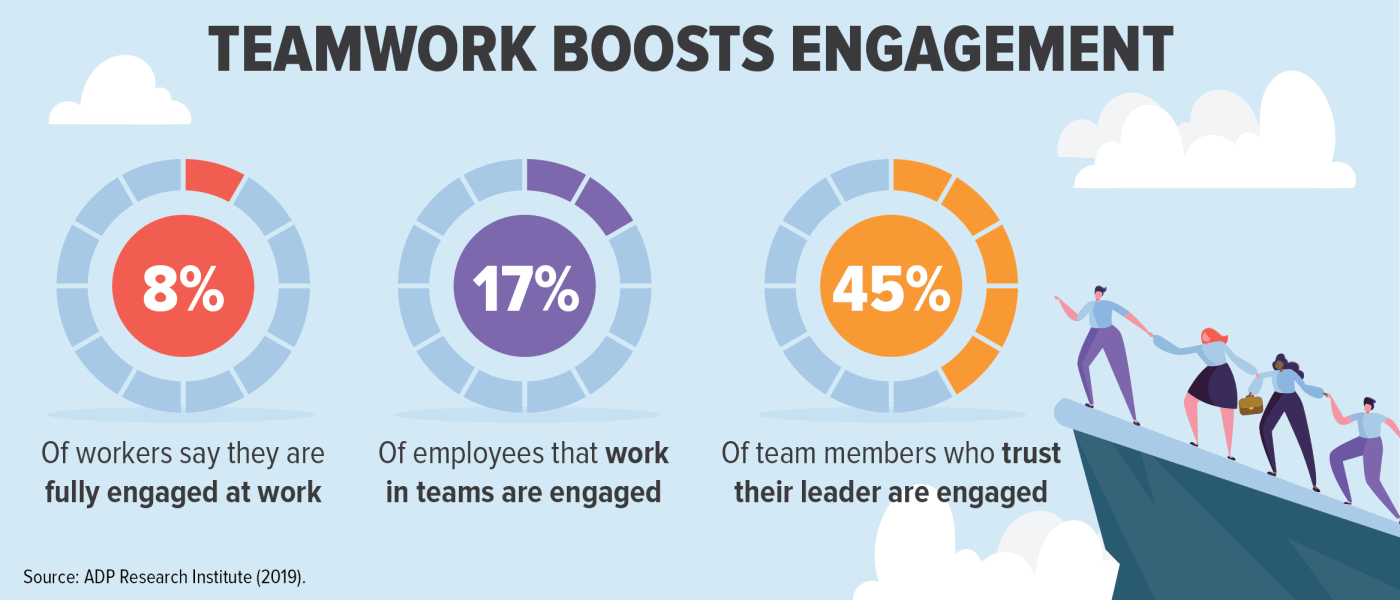
However, the ADP research found that 17 percent of employees who work in teams are engaged in their roles. When team members trust their leaders, the percentage of engaged workers jumps to 45 percent. That level of engagement and trust can make a huge difference to a company's bottom line.
"In the last five to 10 years, there has been a whole different philosophy around work," says Christina Zurek, insights and strategy leader at the ITA Group, a West Des Moines, Iowa-based consulting company specializing in employee and customer engagement. "There's heavy collaboration and not as much hierarchical structure."
Zurek adds that the trend toward teamwork is being driven by Millennials' preference to work in groups, along with companies' increasing efforts to create inclusive workplaces. That means organizations have an ever-wider selection of activities and programs designed to help them form bonds between employees, as well as between teams and their leaders.
"There's more variety," she says. "The default used to be a happy hour or a potluck."
Not anymore.
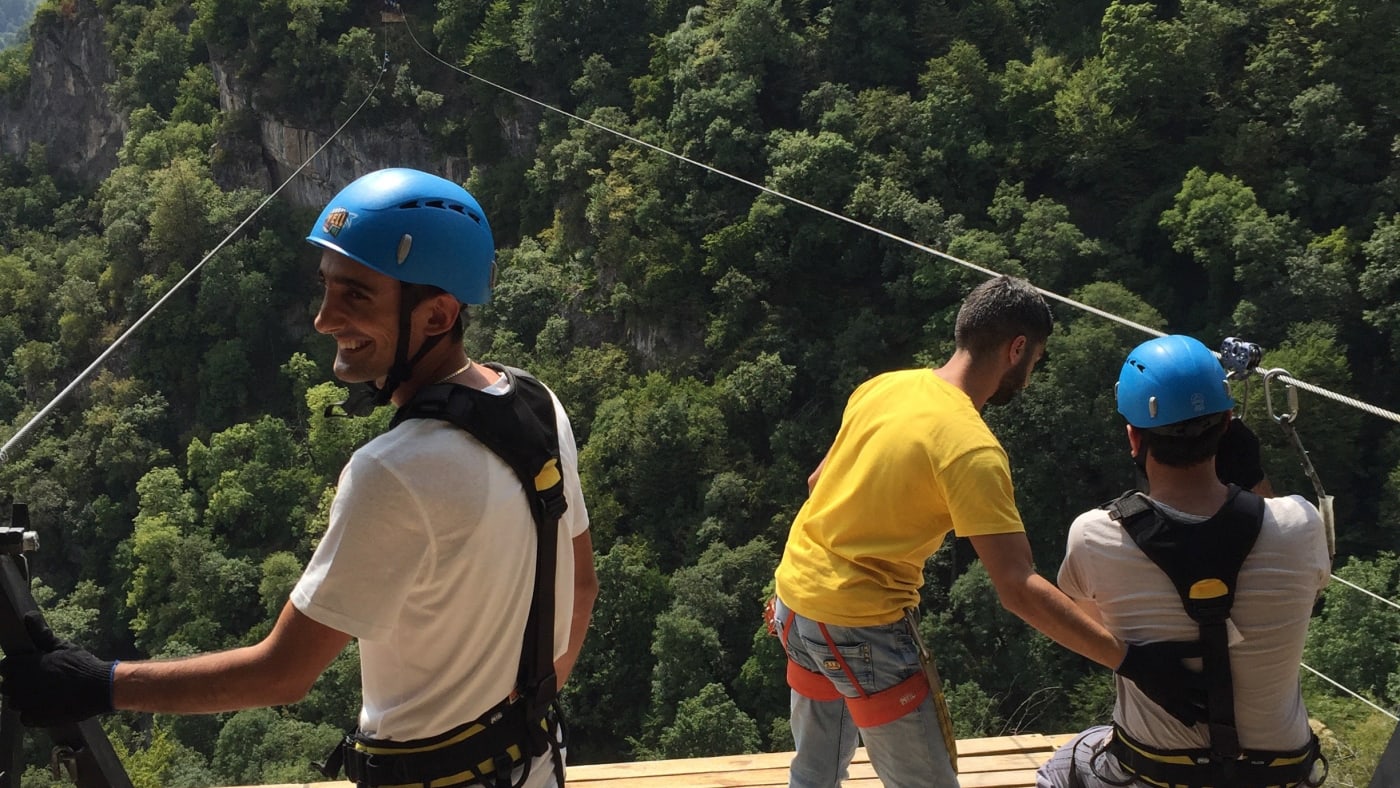
Bonding Activities
Sometimes a dilemma is too complicated to be solved over a couple of drinks or a spread featuring workers' favorite foods. A conflict among six individuals earning $100,000 a year could cost an organization $255,000 when factors such as wasted time and low productivity are accounted for, according to calculations made by the Abringer Institute, a consulting and coaching company in Farmington, Utah. That may not be much to a Fortune 500 company, but it could be crippling to small enterprise.
Before planning for a team-bonding event, leaders first must decide what they're hoping to achieve. A light-hearted jaunt may temporarily relieve tension but won't solve a serious problem. And a substantial portion of the team may not want to attend: Nearly a third of employees said that team building was an office event they secretly dislike, tied with baby showers, according to a survey conducted by Wakefield Research for Citrix Systems Inc. They were second only to costume parties on the list of events that workers would rather skip.
Activities such as scavenger hunts, which got a big boost from the TV show "The Amazing Race," and ax throwing, in a nod to "Game of Thrones," have become popular company outings. They can be useful for rewarding an achievement or simply having some out-of-office entertainment. They also help establish cohesion by creating a shared memory.
But experts caution that these types of activities won't have a lasting, meaningful effect on the workplace. At social functions employees tend to gravitate to those they already know, making it unlikely that colleagues will form new connections.
"They're light and fun, but it's like going to a family wedding—everyone is going to act all nice to one another but still hate each other at the end," says Andy Kraus, executive vice president of operations at Team Builders Plus, a consulting company in Marlton, N.J.
Volunteer projects such as building bicycles or preparing meals in a soup kitchen can help foster workplace ties. That's because they typically require considerable group coordination. Plus, employees get a boost from helping those in need.
Escape rooms can offer a window into how individuals interact with one another as they try to decipher clues that will provide the key to release them from captivity. Kraus suggests that for the exercise to be useful, however, a facilitator should observe the group and then lead participants as they discuss their impressions of the experience.
"You need trainers—otherwise you aren't going to leave with anything," he says.
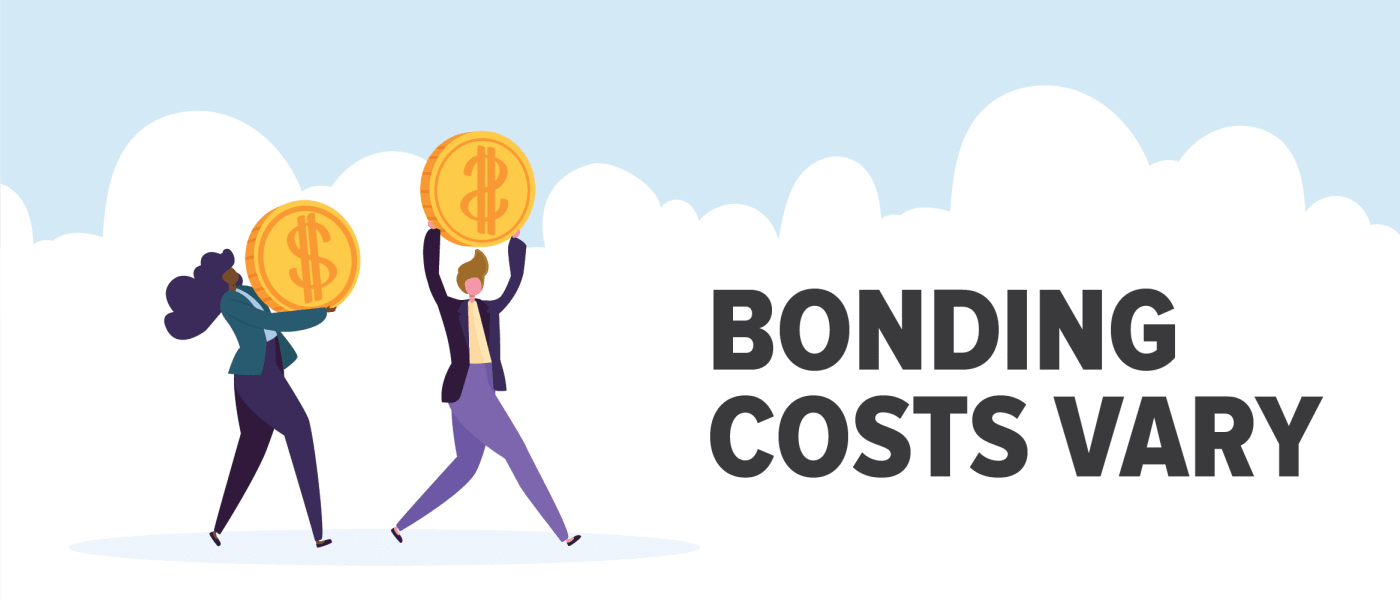
To build bonds among team members, company leaders have an ever-growing number of programs and activities to choose from, from the affordable to the extravagant.
Pricey Options
- Schellman & Company employees spent five days at the Hilton Playa Del Carmen, an all-inclusive resort on the Mexican Riviera. The trip included a “Day of the Dead” theme party and excursions to Mayan ruins. The cost was roughly $2,500 per person.
- EventGeek sent 25 workers to San Francisco for a week. The trip included specialized tours of Alcatraz and the city’s Museum of Modern Art, a visit to an oyster farm and dinner in the Sonoma Valley. The total cost was roughly $33,000.
- Ten executives from Mohegan Gaming & Entertainment spent a day preparing for a potential nightmare: escaping from an airplane that has crashed into the water. Participants completed various exercises in a pool before a simulated plane crash. The cost was about $970 per person, or roughly $10,000, at Connecticut-based Survival Systems USA Inc.
More-Affordable Activities
- A customized scavenger hunt costs between $1,500 and $2,000 for up to 70 people to participate in an “Amazing Race”-style experience from the Thrill of the Hunt, a Pennsylvania-based company.
- To be released from a locked escape room that can have a variety of themes (including doctors’ offices, saloons and train cars), a team has an hour to find clues and solve a mystery. The Amazing Escape Room, a New Jersey-based company, charges $30 an hour per person for the chance to crack the code, but only 20 percent of the mysteries are solved.
- Tossing axes for two hours costs $40 per person, including instruction, at Bury the Hatchet, which has locations in Pennsylvania, New Jersey and elsewhere.
- Museum Hacks creates customized tours of museums all over the country. For example, employees at a yogurt maker touring the Metropolitan Museum of Art in New York City viewed a painting of Genghis Khan and learned that the ruler fed the dairy product to his army. Two-hour tours range from $99 to $159 per person.
Multiday Retreats
Forging connections in organizations where large groups of employees work remotely is especially challenging. Many leaders at such companies insist that multiday retreats that combine leisure with business are the most effective way to cement relationships.
Every year, the partners at law firm Culhane Meadows go on a three-day retreat without their families. The cloud-based firm headquartered in Washington, D.C., has 70 partners working in 10 markets, and the getaway is the only time they all see one another.
The retreat always has a theme, and last year's focused on creating work/life balance. It stemmed from the suicide of a partner at a prominent law firm late last year that grabbed headlines after his widow published an open letter titled "Big Law Killed My Husband," detailing how work stress contributed to the man's death.
"If we have unhealthy lawyers, that's going to have a big impact on the firm," says Grant A. Walsh, a Dallas-based partner. "We wanted people to know they weren't alone and where to get help."
Discussion topics included spotting the signs of a problem and where to get help. After one session, Walsh says a partner stated that he was a recovering alcoholic and that anyone struggling with that issue was welcome to contact him. Another partner discussed her experiences with depression and also offered to listen to anyone needing an ear. In all, seven partners shared their experiences coping with mental health issues.
"It was amazing, and it wasn't planned," he says. "That is trust."
Walsh doesn't think that kind of spontaneous interaction would happen if the partners weren't out of the office and in a nonbusiness setting. Colleagues' willingness to be so open about their personal lives leads to more honest and helpful business communications, he says.
Most of the employees at Tampa, Fla.-based consulting firm Schellman & Company LLC, don't see each other regularly because they're scattered across 30 states. Once a year, the company hosts a four-day retreat at a vacation destination where each worker can bring a guest.
"It's a thank-you to them for working so hard," says Carrie Davis, the company's human resources manager. Guests are included, since the consulting work often takes employees away from their families for days at time, and the company arranges numerous activities. This year the event was held in Playa del Carmen, Mexico, and the festivities featured a trip to Mayan ruins and a "Day of the Dead" theme party.
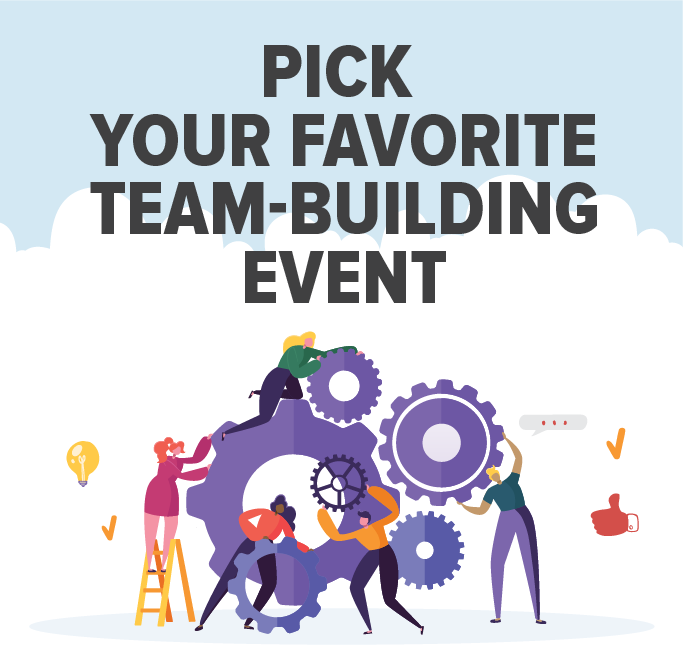 Davis adds that Schellman doesn't want to "bog down" employees with an overload of business-related requirements at the retreat. "We want them to feel good about the company," she says.
Davis adds that Schellman doesn't want to "bog down" employees with an overload of business-related requirements at the retreat. "We want them to feel good about the company," she says.
However, activities at the event, which costs about $2,500 per person, are mandatory. "We're not paying for you to have a vacation," Davis says. That's because the company wants to build camaraderie. It asks employees to use a special app on their phone to record each time they speak with a different colleague.
The weeklong retreats sponsored by San Francisco-based EventGeek, a corporate-events management company, are also designed more around merriment than work. It would be hard to find an organization that takes its workers on a more exotic retreat: All 25 employees meet in Armenia once a year because that's where more than half the staff is based.
Alex Patriquin, EventGeek's founder and CEO, is of Armenian descent. He says employing people in his grandmother's birthplace pays homage to his heritage. The decision also makes financial sense, because Armenia has excellent programmers who are much less expensive to hire than those in the U.S. The company also holds at least one more annual retreat elsewhere. This year's getaway in San Francisco cost about $33,000.
"We aren't trying to churn out work, but instead improve communication," Patriquin says. He notes that there are various ways employees can communicate, such as Skype and Slack, though it's the personal interactions that build unity among the group.
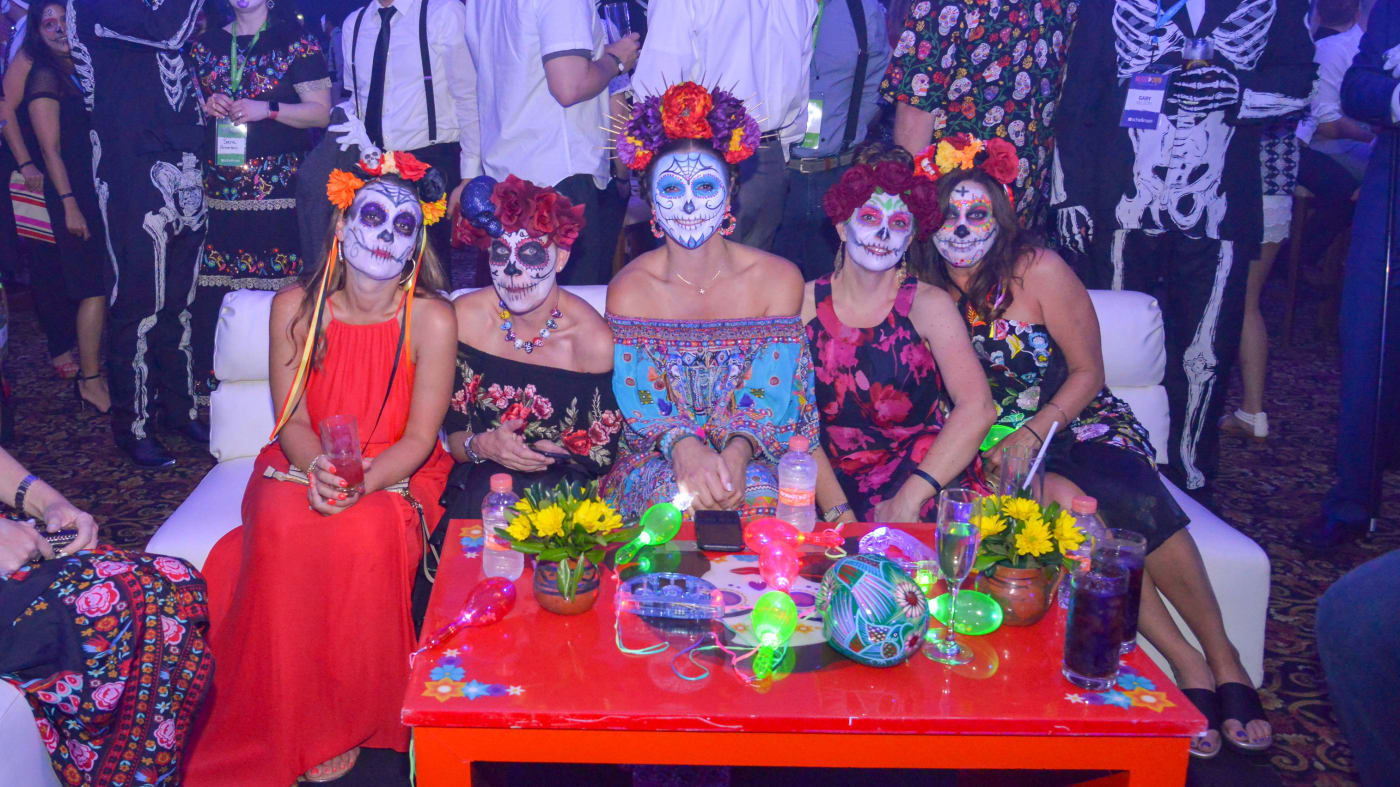
Tearing Down Walls
Of course, proximity among members doesn't guarantee a well-functioning team. The solution to a problem depends on the root of the issue as well as the purpose of the team and its members' roles.
Bethesda, Md.-based USSI provides commercial janitorial and cleaning services to companies all over the country and has roughly 1,300 employees. About 18 months ago, tensions were high and morale was low among members of one building's cleaning crew, according to Danna Hewick, SHRM-SCP, vice president of human resources at the company.
The situation became so intense that Hewick headed to the site. Realizing that a bowling night or a pizza party wasn't going to resolve the issue, she spent time speaking with the crew and realized that the rancor stemmed from long-standing prejudices between the two ethnic groups that made up the team. Her solution was to have the group discuss their backgrounds to help them realize that as immigrants from the same part of the world, they had much in common. Hewick also re-iterated what constituted professional behavior on the job and held conflict-resolution training sessions for management. And she rearranged schedules so members from the two groups were forced to work, eat lunch and take breaks at the same time.
"We started to tear down walls," she says, adding that the atmosphere at the building is notably better.
Hewick notes that the English language skills and education levels among those working at the company vary greatly. "In the field you don't want to make things too difficult," she says. "You just want basic conversation."

- Hold sessions offsite if possible. There will be fewer distractions, and people can’t sneak back to their desks.
- Ask employees what types of activities they would enjoy, keeping in mind that not everyone is athletic, musically inclined or comfortable wearing bathing suits in front of colleagues.
- Give workers ample notice for mandatory evening events or multiple-day retreats, so they have enough time to make alternative arrangements for personal responsibilities such as child care.
- Don’t pressure people to go to nonmandatory weekend or evening “fun” events. It’s not enjoyable if it’s forced.
- Limit out-of-office retreats to two days so employees don’t spend too much time away from personal obligations and to avoid work piling up while they’re away.
- Be mindful of people’s dietary restrictions and cultural customs.
- Postpone any alcohol consumption until after the serious portions of the events are over.
From Extreme to Conventional
Building bonds among employees in administration and management often takes a concentrated and sophisticated approach.
And in some cases, extreme. Two years ago, 10 executives from Mohegan Gaming & Entertainment took a full-day water survival skills class that included various exercises in a pool and culminated in a simulated plane crash from which they had to escape.
"I was completely terrified going down in that plane" says Kelly Sullivan, director of organizational development at the Connecticut-based company, which owns, operates and develops casinos. "There was this internal struggle in my brain. How do I get through this? Will I get through this?"
Yet it was her idea to take the group to Groton, Conn.-based Survival Systems USA Inc., which provides training for law enforcement agencies, the military and aviation companies. "We're in the entertainment business. If we aren't having fun and pushing ourselves, how are our guests going to have fun?" Sullivan says.
The event took on greater significance by the time the team attended the training, because the company's chief executive had left and the organization was in turmoil. The experience forced people beyond their comfort zones, and, after it was over, there was a greater sense of optimism about the company's troubles, Sullivan says.
"You really had to trust your team," she says. "You were putting your life in their hands."
Others take a much more conventional approach to team building. Hewick says personality tests are a good idea because they help colleagues understand one another better. The market is loaded with test options, including those produced by the Myers-Briggs Company and Hogan Assessments. She's a fan of DiSC personality tests, which divide people into four trait categories: dominance, influence, steadiness and compliance.
The test results can help colleagues get a better understanding of each other, with the hope that they won't take one another's actions too personally, Hewick says. For example, a headstrong individual may remember to tone down her behavior when interacting with a quieter colleague.
It's not perfect, though. "People get upset, they get angry," she says. "We're all human."
But in the end, the bonds that team members and their leaders develop help them overcome their disagreements and differences and do better work—together.
Theresa Agovino is the workplace editor for SHRM.
Explore Further
SHRM provides resources to help business leaders build and maintain high-performing teams at work.
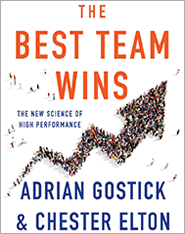 | Book Blog: Inspire Your Team Up to 80 percent of employees' days are spent working in teams. The benefits can be enormous, but too often they're not realized. Based on tens of thousands of employee engagement survey responses, this book shares tips for overcoming common challenges and building cohesive, productive teams. |
Toolkit: Developing and Sustaining High-Performance Work Teams
Learn about the primary types of teams, team development and causes of dysfunction, along with suggestions for improving a team's work process.
How to Improve Teamwork
How can teams boost their performance? They perform best when their members agree on rules related to goals, roles and norms.
Coach to Your Team's Strengths to Improve Employee Engagement
Best practices that organizations and managers can follow to maximize worker engagement—from strength-building to safe-space dialogue to stronger mission connection.
HR Q&A: What if someone gets hurt?
Is an employer liable when an employee on a company-sponsored sports team is injured during an event?



